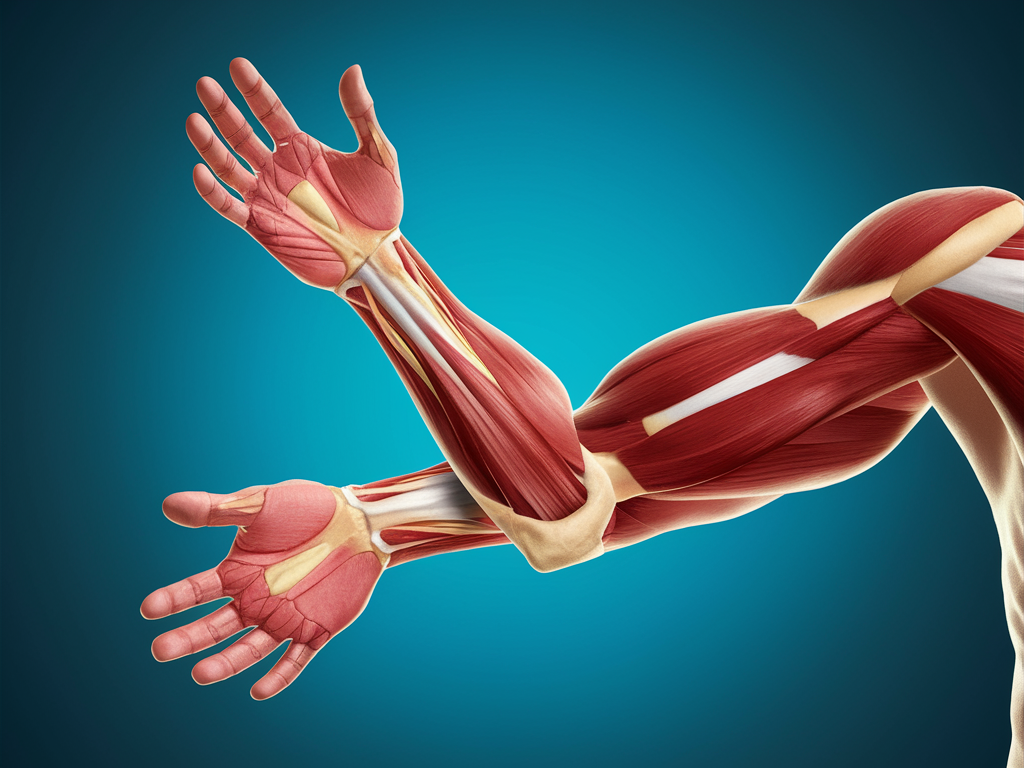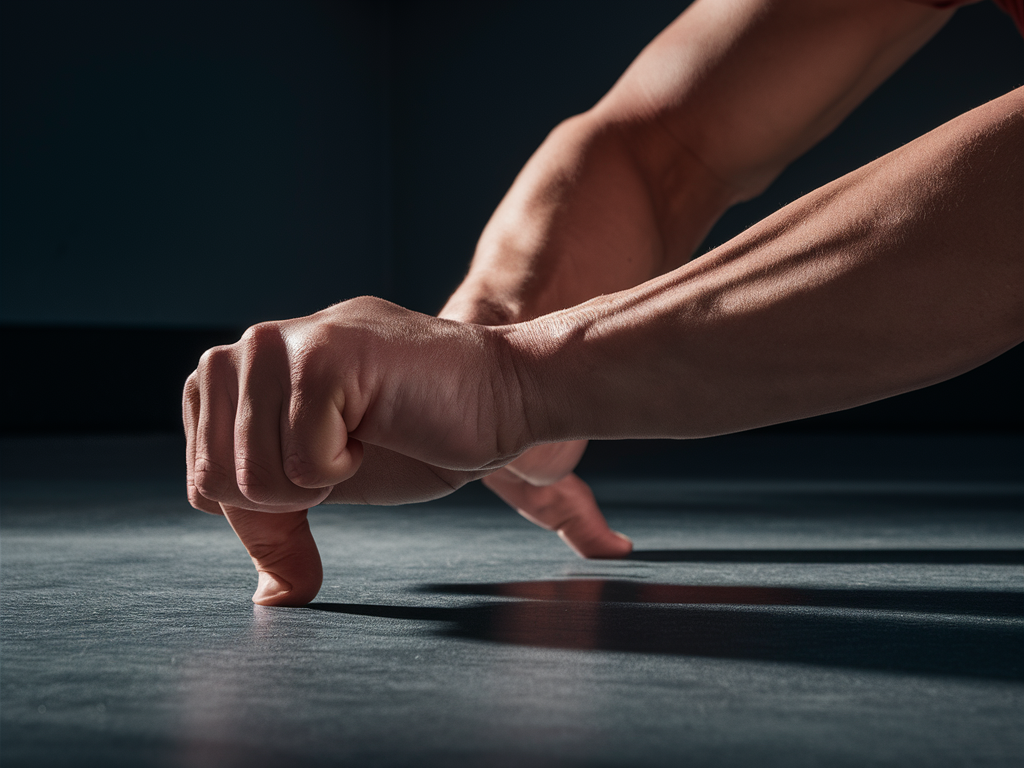The strength of your forearms is crucial for numerous daily activities and exercises, yet this muscle group often remains overlooked in fitness routines. Whether you’re an athlete seeking improved performance or someone wanting better functional strength for everyday tasks, developing forearm power can make a significant difference. The beauty of forearm training is that it doesn’t require fancy equipment or gym memberships—you can build impressive forearm strength using simple, equipment-free techniques right at home.
This comprehensive guide explores 15 expert tips for developing stronger forearms, highlighting no-equipment workouts while helping you avoid common pitfalls that hinder progress. Let’s dive into the world of forearm training and discover how you can transform this often-neglected area into a powerful asset for your overall fitness.
Tip #1: Understand Your Forearm Anatomy
Before jumping into exercises, it’s essential to understand what you’re working with. Your forearms contain numerous muscles divided into two main groups: flexors (on the inner forearm) and extensors (on the outer forearm).
The flexor group helps with gripping and wrist curling movements, while extensors assist with opening the hand and extending the wrist. Additional muscles control rotation of the forearm (pronation and supination). Understanding this anatomy allows you to target exercises specifically to areas that need development.
For balanced forearm development, you should incorporate exercises that target all these muscle groups—not just the flexors that naturally get worked during pulling exercises. This balanced approach prevents muscular imbalances that could lead to injuries or performance plateaus.

Tip #2: Master the Perfect Hand Grip
Grip strength forms the foundation of forearm development and comes in several variations:
- Crushing grip: Used when squeezing objects between your fingers and palm
- Pinch grip: Employed when holding things between your thumb and fingers
- Support grip: Activated when hanging or holding weight for extended periods
To improve grip strength without equipment, try these simple progression techniques:
- Practice “phantom gripping” by squeezing your hand as hard as possible for 10 seconds, then relaxing
- Hold the squeeze at different finger positions to target various aspects of grip strength
- Gradually increase duration as you build endurance
This fundamental skill translates directly to improved forearm development and provides a base for more advanced training techniques.
Tip #3: Incorporate Finger Curls
Finger curls specifically target the flexor muscles running along the inside of your forearm. Without equipment, you can perform this exercise by:
- Extending your arms in front of you with palms facing down
- Curling your fingertips toward your palm gradually, one joint at a time
- Squeezing fully at the end position
- Slowly extending back to the starting position
For progression, increase repetitions, add hold times at the fully curled position, or perform the exercise with just one hand at a time to increase focus and intensity. This movement particularly benefits climbers, musicians, and anyone requiring fine motor control in their fingers while simultaneously building forearm strength.
Tip #4: Use Towel Wringing
Towel wringing is an excellent exercise for developing rotational forearm strength and targeting muscles used in twisting motions. Here’s how to perform it:
- Take a regular bath towel and soak it with water
- Grip the towel with both hands, positioned about shoulder-width apart
- Twist the towel in opposite directions as if wringing water out of it
- Continue wringing for 30-60 seconds, alternating twist directions
As you progress, use a larger, thicker towel or add more water to increase resistance. The benefit of this exercise is that it works the pronator and supinator muscles that rotate your forearm, which are often neglected in traditional training but crucial for activities requiring forearm rotation.
Tip #5: Try Reverse Push-ups
Reverse push-ups specifically target the forearm extensors, the muscles that open your hand and extend your wrist. Here’s how to perform them:
- Get into a push-up position but with the backs of your hands on the floor (fingers pointing toward your feet)
- Keep your elbows slightly bent to reduce wrist strain
- Lower your body slightly by bending your elbows more
- Push back up to the starting position
For beginners, start by just holding the position or doing the movement on your knees. Advanced practitioners can elevate their feet or add a pause at the bottom of the movement.
This exercise is particularly valuable because it strengthens the often-neglected extensor muscles, helping to create balanced forearm development and reducing the risk of conditions like tennis elbow.
Tip #6: Practice Wrist Curls and Extensions
While traditionally done with weights, wrist curls and extensions can be adapted for no-equipment training:
For wrist curls (flexion):
- Sit on the edge of a chair with your forearms resting on your thighs, palms facing up
- Let your hands hang off your knees
- Curl your wrist upward as far as possible
- Slowly lower back down past the neutral position for a full stretch
For wrist extensions:
- Same position, but with palms facing down
- Extend your wrist upward as far as possible
- Lower slowly back down
For added resistance, you can use everyday objects like a light book, water bottle, or can of food. Focus on proper technique—slow, controlled movements without swinging—to prevent injury while maximizing forearm engagement.

Tip #7: Incorporate Plate Pinches with Household Items
Plate pinches traditionally involve pinching weight plates together, but you can replicate this with common household items:
- Pinch two smooth-surfaced books together with your fingertips
- Hold two dinner plates together with the smooth sides facing out
- Pinch a smooth plastic container lid between thumb and fingers
Start by holding the pinch for 20-30 seconds, then progress by increasing hold time, using heavier/larger items, or trying single-hand pinches. This exercise dramatically improves your pinch grip strength while developing the muscles in your thumb and fingers along with the supporting forearm muscles.
Tip #8: Master Fingertip Push-ups
Fingertip push-ups represent an advanced bodyweight exercise that intensely targets your fingers and forearms:
- Begin in a push-up position but with only your fingertips touching the ground
- Keep your fingers spread slightly and press firmly into the floor
- Lower your body by bending your elbows
- Push back up to the starting position
For beginners, start on your knees or against a wall. As you progress, move to a standard position, then advance to fewer fingers or offset positions. These push-ups build incredible finger strength and forearm stability while enhancing the mind-muscle connection to your forearms.
Tip #9: Add Farmer’s Walks with Everyday Objects
The farmer’s walk is typically performed with heavy weights, but you can use household items effectively:
- Fill two gallons jugs, buckets, or grocery bags with water or other items
- Stand tall with shoulders back and core engaged
- Grip the objects firmly at your sides
- Walk slowly and deliberately for distance or time
Maintain proper posture throughout—shoulders down and back, core tight, and natural walking gait. This exercise not only builds tremendous grip endurance and forearm strength but also works your core, shoulders, and entire posterior chain, making it one of the most functional exercises in this guide.
Tip #10: Avoid Common Mistake: Neglecting Extension Movements
A critical mistake in forearm training is focusing exclusively on grip and flexion while ignoring extension movements. This imbalance can lead to disproportionate development and increased injury risk.
Simple extension exercises without equipment include:
- Tabletop extensions: Place your hand palm-down on a table with your wrist at the edge, then lift the back of your hand upward
- Finger splays: Spread your fingers as wide as possible against light resistance (such as a rubber band around your fingers)
- The previously mentioned reverse push-ups
Balancing flexion and extension training helps prevent common issues like tennis elbow and carpal tunnel syndrome while ensuring comprehensive forearm development.
Tip #11: Avoid Common Mistake: Training Forearms Too Frequently
Despite their constant use in daily activities, forearm muscles need recovery time like any other muscle group. Training them daily can lead to overuse injuries, decreased performance, and stalled progress.
For optimal results:
- Limit direct forearm training to 2-3 dedicated sessions per week
- Allow at least 48 hours between intense forearm workouts
- Watch for signs of overtraining like persistent soreness, decreased grip strength, or unusual pain
Recovery strategies include gentle stretching, contrast therapy (alternating hot and cold), and self-massage techniques. Remember that growth occurs during recovery, not during the workout itself.
Tip #12: Avoid Common Mistake: Poor Form During Compound Exercises
Many people unknowingly diminish forearm development by using improper grip techniques during compound movements like pull-ups, rows, or pressing exercises.
Common errors include:
- Relying on wrist straps too frequently
- Using momentum instead of muscular control
- Failing to fully engage the hands during gripping activities
To correct these issues, focus on maintaining a mindful connection to your forearms during all pulling and carrying movements. Think about “crushing” the bar or handle you’re gripping and maintain tension throughout the entire range of motion. This mental focus dramatically increases forearm recruitment during regular exercises.

Tip #13: Implement Progressive Overload Strategies
Like any muscle group, forearms respond to progressive overload—gradually increasing the demands placed on them. Without equipment, you can progress by:
- Increasing time under tension (slower movements or isometric holds)
- Adding more repetitions or sets
- Decreasing rest periods between exercises
- Advancing to more challenging variations of each exercise
For resistance progression without equipment, get creative with household items of increasing weight or difficulty. For example, start with towel wringing using a hand towel, then progress to a bath towel, and finally to a beach towel with more water.
Tip #14: Integrate Forearm Training into Daily Activities
One of the most effective strategies for forearm development is mindfully incorporating training into everyday activities:
- Practice carrying grocery bags with fingers rather than hooking them over your hand
- Open jars and bottles using only finger strength (safely)
- Carry heavy objects with different grip positions
- Practice squeezing stress balls or hand grippers during idle moments
By consciously engaging your forearms during regular activities, you build functional strength that translates directly to improved performance in both fitness and daily life. This approach also increases overall training volume without requiring additional dedicated workout time.
Tip #15: Maintain Consistent Forearm Stretching and Recovery
Forearm health requires attention to flexibility and recovery alongside strength development. Essential stretches include:
- Flexor stretch: Extend your arm with palm up, use opposite hand to gently pull fingers back
- Extensor stretch: Extend arm with palm down, use opposite hand to pull fingers downward
- Wrist rotations: Gentle circular motions of the wrists
For self-massage without special tools, use your opposite thumb to press into tight forearm muscles, working slowly from elbow to wrist. Tennis balls or rolling pins can also provide effective pressure.
Consistent stretching and recovery work prevents the excessive tightness that commonly develops with forearm training and helps ensure continued progress without plateaus or setbacks.
Conclusion
Building stronger forearms doesn’t require expensive equipment or complicated routines—just consistent application of these 15 expert tips. Focus on balanced development of all forearm muscles, apply progressive overload principles, and incorporate both direct and indirect training methods into your routine.
Remember that forearm development takes time. These muscles contain a high proportion of slow-twitch fibers that respond best to consistent training over months rather than intense blasts. With patience and proper technique, you’ll develop forearms that not only look impressive but provide functional strength for all your athletic and daily activities.
Start implementing these techniques today, and you’ll soon notice improvements in grip strength, wrist stability, and overall forearm development—all without setting foot in a gym or purchasing special equipment.

